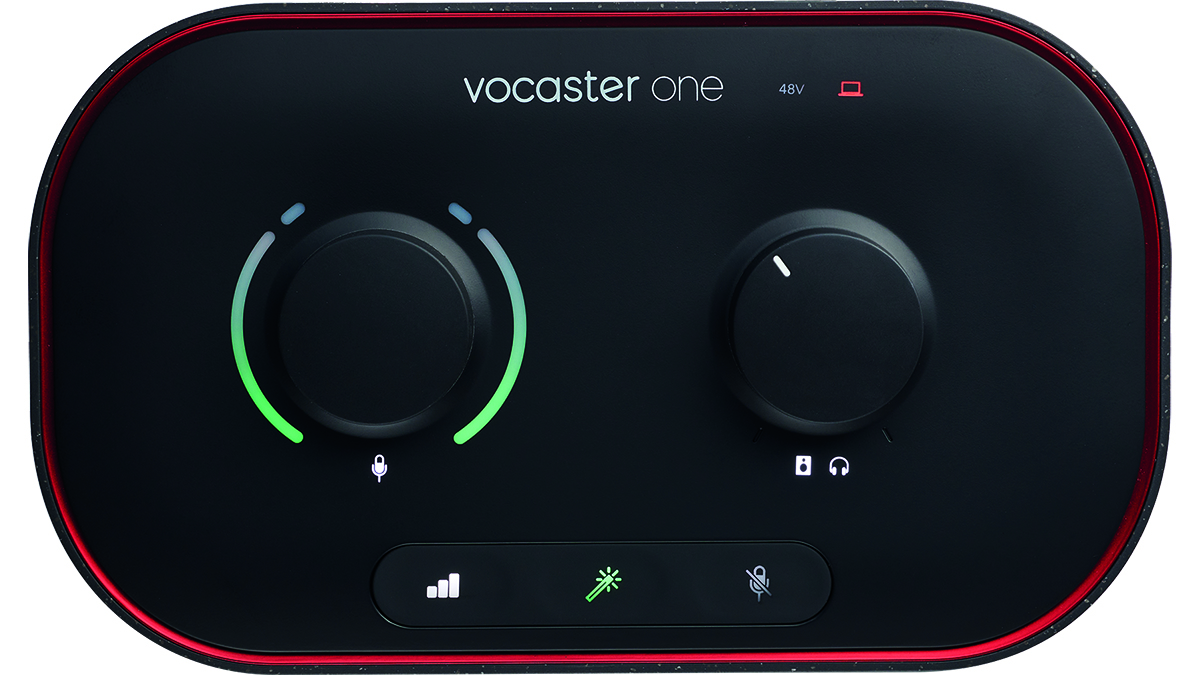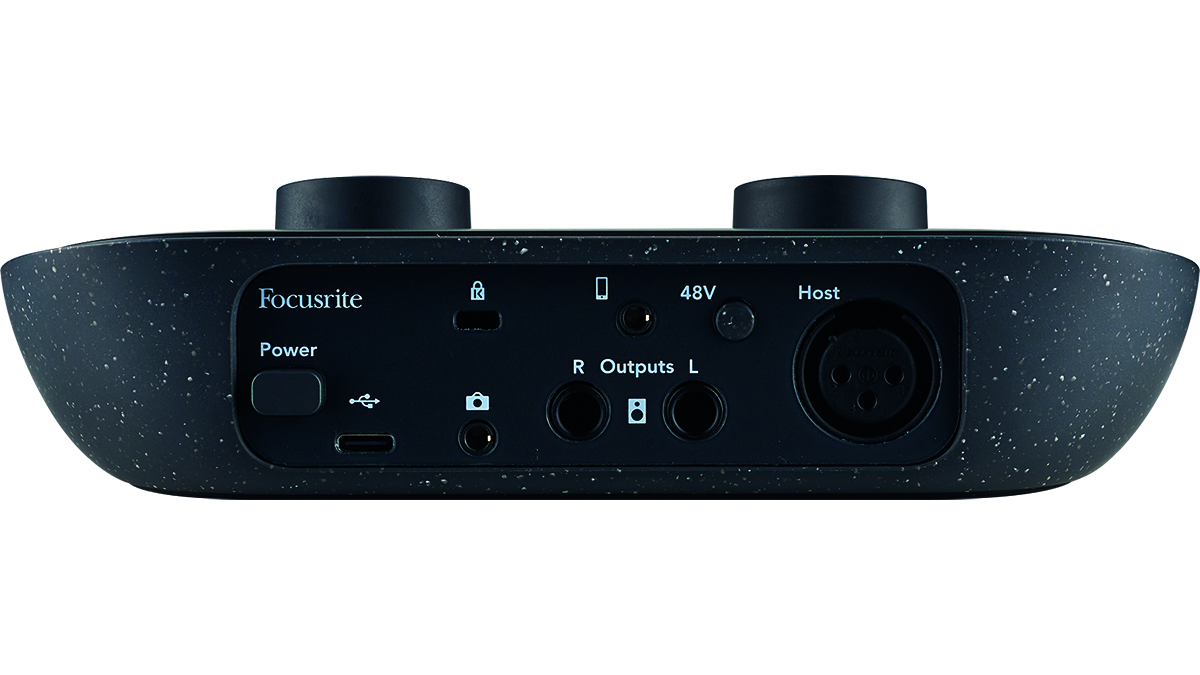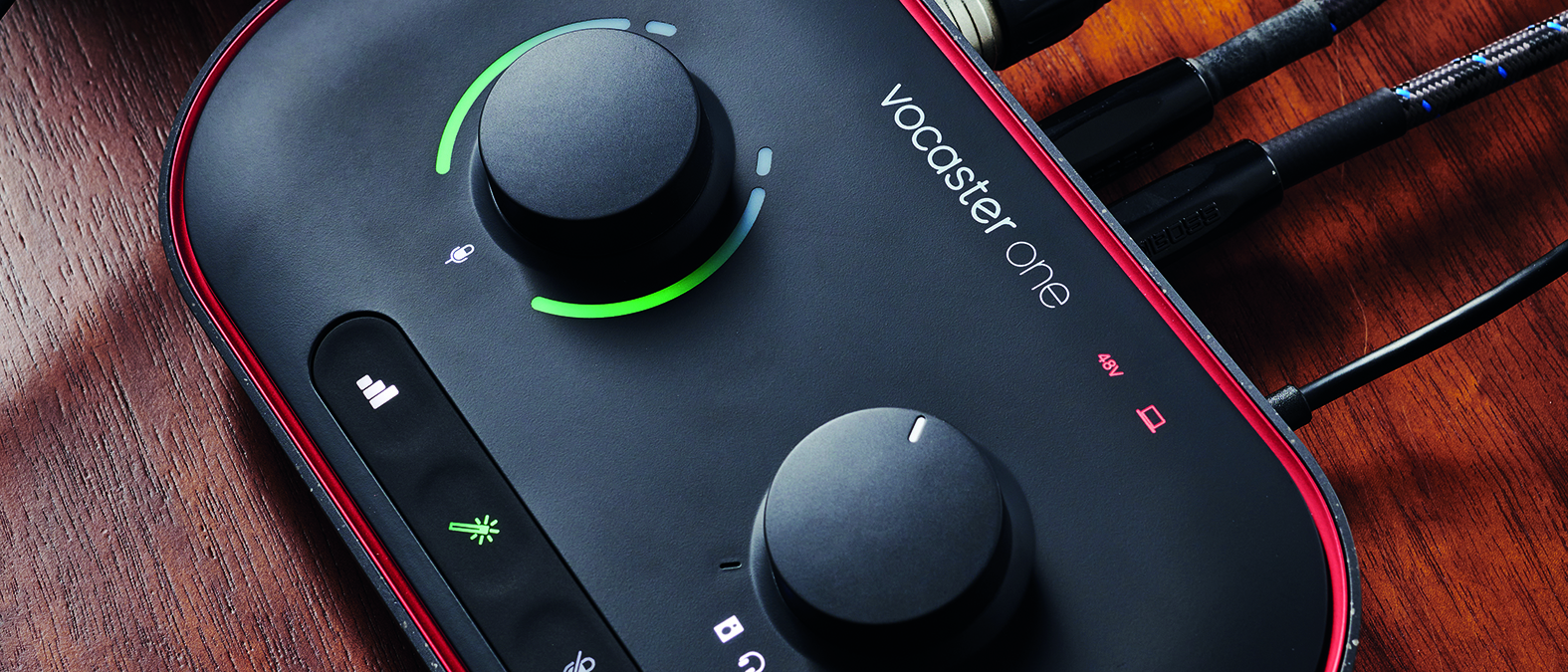MusicRadar Verdict
This entry level podcasting interface can work as a standalone mixer, but is at its best used with its own Vocaster Hub software.
Pros
- +
Time-saving options including mic auto gain and enhance.
- +
Output feed for camera.
- +
Split and mixed streams available to record on DAW.
- +
Loopback option for including two stereo computer sources.
- +
Can be used as a standalone mixer.
Cons
- -
48kHz is the only sample rate option.
MusicRadar's got your back
Focusrite Vocaster One: What is it?
Upending the trend for multi-participant devices, Vocaster One is a 1-mic input podcast specific interface (24-bit / 48kHz) for solo content creators.
Built around a diminutive desktop case, the top panel has one continuous encoder to set input gain, one output level knob for headphones and main output, and three mic function buttons – auto gain, enhance and mute. A multi-coloured backlit halo on the encoder knob shows the knob position, input signal level and acts as a 10-second countdown indicator for the handy mic auto gain feature.

Focusrite Vocaster One: Performance and verdict
For connectivity, you’ll find a regular quarter-inch headphone connector on the front and a single XLR mic input (Host) with accompanying phantom power switch on the back. Note this is not a combi XLR, further emphasising that this is a podcasting device rather than a more general purpose interface.
Main monitor outputs are on a pair of 1/4” TRS jacks and power and DAW connectivity is provided via a USB C connector. Two mini-jacks provide TRRS connections for your phone and another output on TRS from the Vocaster to your camera audio input. The phone connection is mono, so it’s ideal for adding phone calls to your podcast, and it also incorporates mix minus return to the phone, so your phone guest will hear the Vocaster output minus their voice.

Although the USB connection provides interfacing to your computer, you can also power Vocaster with a regular USB power supply and cable, and use it as a standalone device, albeit without additional software features.
Vocaster ships with a software bundle that includes Hindenburg LITE plus limited subscriptions for Acast Influencer and Squadcast Pro + Video. However, most significant is its own Vocaster Hub software. This adds considerable functionality. For example, this is where you select the type of mic Enhance applied (Clean, Warm, Bright or Radio). It’s also where you can fine-tune aspects of the overall podcast mix. Options here include two Loopback faders so you can mix in audio from other computer sources, as well as the auxiliary input from the phone and the overall ‘Show Mix’. These streams are also available as inputs on your DAW so you can record both the overall blend and individual components for mixing later.
Software functionality, coupled with features such as auto gain make Vocaster a well executed unit.
MusicRadar verdict: This entry level podcasting interface can work as a standalone mixer, but is at its best used with its own Vocaster Hub software.
Focusrite Vocaster One: The web says
"The Focusrite Vocaster One provides a compelling solution for content creators and delivers what it says on the box."
9to5Toys
Focusrite Vocaster One: Hands-on demos
FocusriteTV
Audio Hotline
Melanie Scroggins
Focusrite Vocaster One: Specifications
- KEY FEATURES: Mic Input: gain range 70dB, THD+N (@-1dBFS) ≤ -94d, Mic power: 48V phantom, Loopback: two stereo streams accessed via Vocaster Hub software, USB Streams: 10 in 4 out, Conversion: 24-bit/48kHz.
- DIMENSIONS: 195(w) x 113(d) x 50(h) mm WEIGHT: Weight: 0.34kg.
- CONTACT: Focusrite
Jon is a London based platinum award winning mixer, producer, composer and club remixer with a diverse CV that spans dance, pop, rock and music for media. He’s also a long term contributor to MusicRadar's music technology tutorials and reviews. Whether working alone or collaborating he usually handles final mixdowns, so you’ll also find MusicRadar peppered with his handy mixing tips.
“A synthesizer that is both easy to use and fun to play whilst maintaining a decent degree of programming depth and flexibility”: PWM Mantis review
“I feel like that song had everything we needed to come back with”: Bring Me The Horizon’s Lee Malia on Shadow Moses, its riff and the secrets behind its tone, and why it was the right anthem at the right time
“I said, ‘Are we sure we can write a song about death?’”: The story of Mike + The Mechanics' classic No.1 The Living Years











